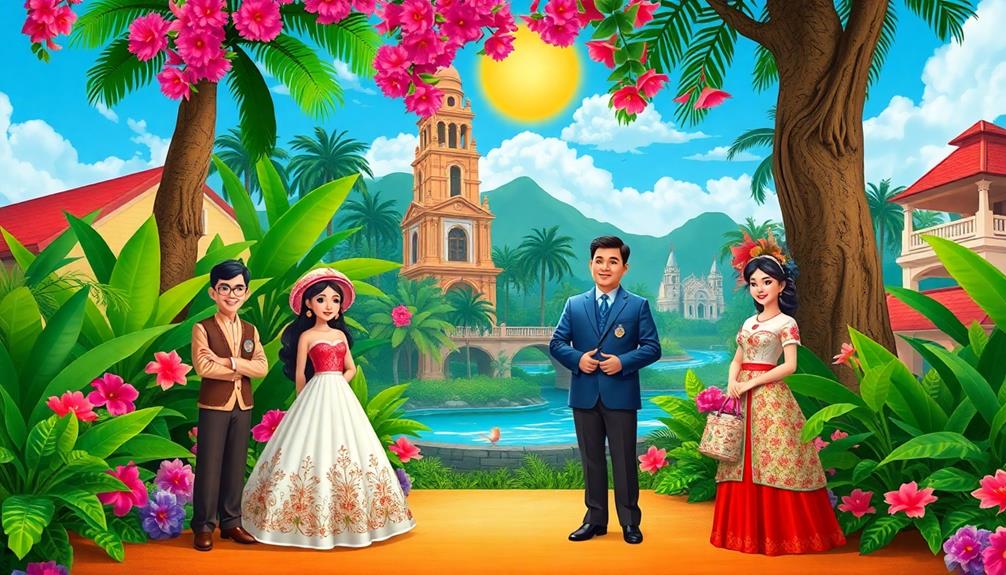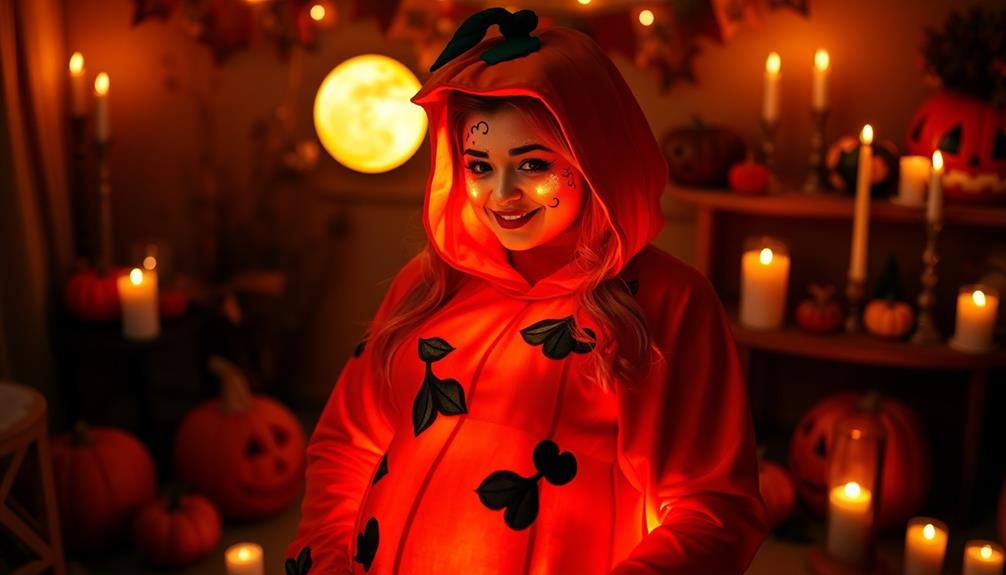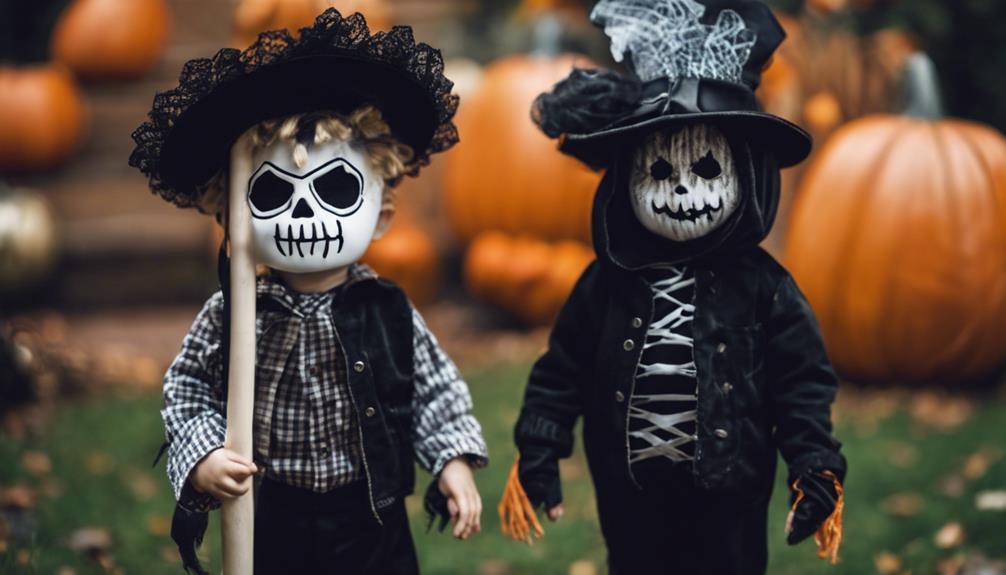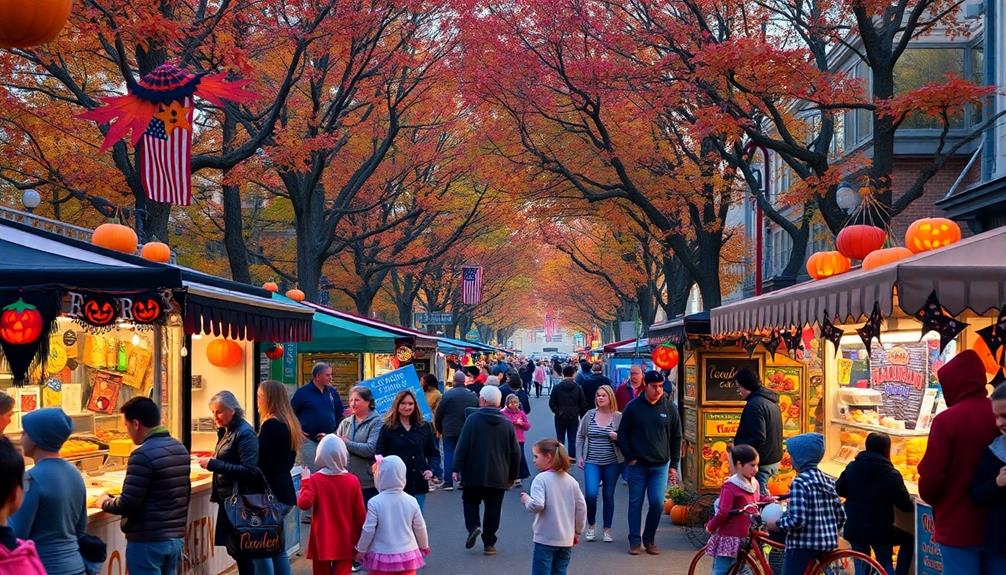You can easily draw inspiration from iconic characters in Filipino literature for your next costume. Think about Maria Makiling, with her mystical vibes, or Sisa, who symbolizes maternal love and despair. For a bold look, channel Darna, the empowered superhero. Incorporate traditional attire like the Barong Tagalog or Barot Saya to highlight cultural heritage. Don't forget accessories like a salakot or panuelo for added flair. For DIY options, use recyclable materials and local elements. Embrace the spirit of Filipino literature in your costume, and you'll discover even more exciting ideas to inspire your creativity.
Key Takeaways
- Create costumes inspired by iconic characters like Maria Makiling, Sisa, and Simoun to celebrate Filipino literature's rich narratives.
- Utilize traditional attire such as Barong Tagalog and Barot Saya to reflect Filipino cultural heritage and historical context.
- Incorporate cultural accessories like salakot, panuelo, and beaded necklaces to enhance authenticity and showcase craftsmanship.
- Engage in DIY costume-making using recyclable materials and natural elements to promote sustainability and creativity.
- Participate in events like National Reading Month to express love for Filipino literature through character-inspired costumes.
Iconic Characters From Filipino Literature
In exploring the vibrant world of Filipino literature, you'll encounter iconic characters that reflect the rich cultural heritage of the Philippines. These figures, like Maria Makiling, a nature spirit deeply rooted in folklore, embody the mystical elements of the Filipino landscape.
Then there's Sisa from José Rizal's "Noli Me Tangere," whose tragic story of maternal love and despair resonates with many, highlighting the emotional depth of familial bonds.
You can't overlook the revolutionary spirit of Simoun in "El Filibusterismo." His character illustrates themes of social justice and the fight against colonial oppression, making him a critical figure in understanding Filipino history.
On a lighter note, the iconic Filipino superhero Darna emerged in the 1940s, symbolizing empowerment and courage, capturing the hearts of many through literature and pop culture.
Additionally, creatures like the Aswang, a mythical figure that evokes both fear and fascination, showcase the integration of folklore in literary narratives.
Each character contributes to a rich tapestry that celebrates Filipino culture, identity, and artistry, making them unforgettable icons in the world of literature.
Traditional Attire for Literary Figures
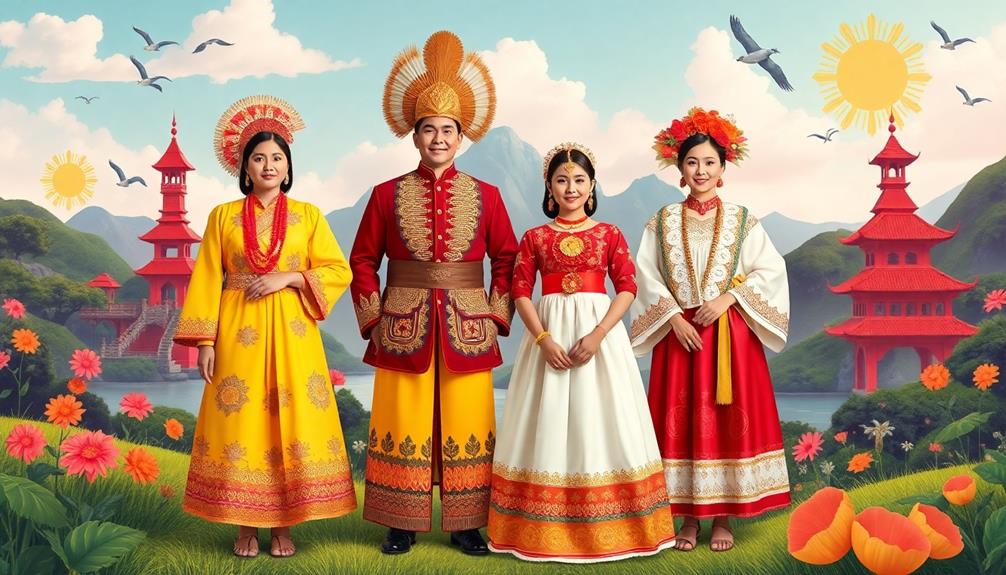
Drawing inspiration from the vibrant cultural tapestry of the Philippines, traditional attire for literary figures vividly reflects their historical and social contexts.
For instance, characters from José Rizal's "Noli Me Tangere" and "El Filibusterismo" are often depicted in clothing styles that embody the late 19th century, showcasing the intricacies of Filipino fashion during the Spanish colonial period.
To create costumes that honor these literary figures, consider these traditional Filipino attire options:
- Barong Tagalog: This elegant, embroidered shirt is a staple for male characters, symbolizing Filipino identity and heritage.
- Barot Saya: A beautiful dress featuring a traditional design, ideal for female characters, representing the grace of Filipino women during that era.
- Piña Fabric: Incorporate this luxurious textile made from pineapple fibers into your costumes to emphasize elegance and craftsmanship.
Cultural Accessories to Enhance Costumes
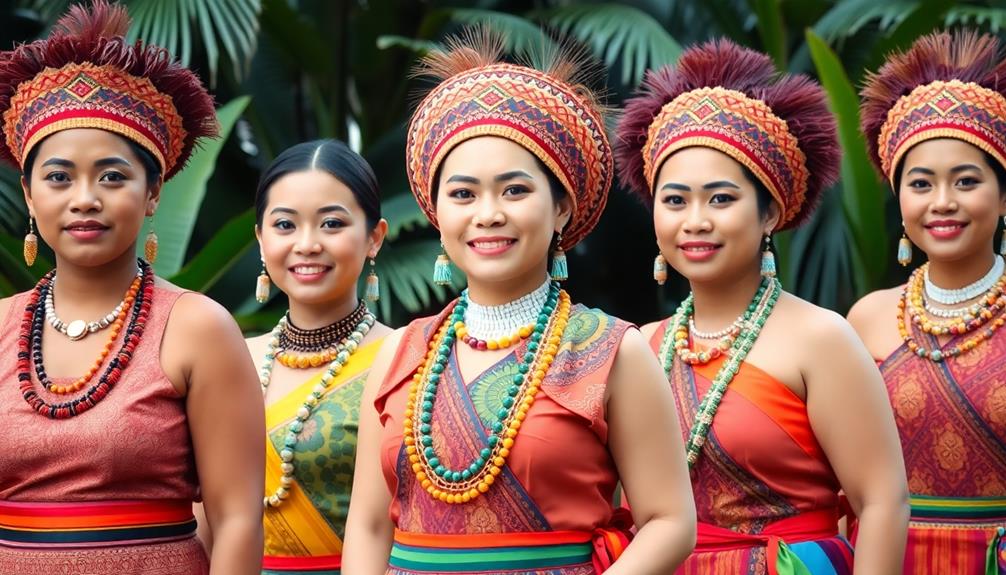
When you think about enhancing your costume inspired by Filipino literature, consider the cultural symbolism behind your accessories.
Items like a tapis or salakot not only add authenticity but also tell a story about the characters and their backgrounds.
Cultural Symbolism in Accessories
Accessories play an essential role in enhancing costumes inspired by Filipino literature, as they carry deep cultural symbolism and heritage. When you're putting together a Filipiniana costume, these accessories not only complete your look but also tell a story about the rich traditions of the Philippines.
Here are three key accessories to contemplate:
- Salakot: This traditional hat reflects the agricultural roots of the Philippines and adds a rustic charm to your outfit.
- Panuelo: This shawl serves both as a functional piece and an elegant addition, symbolizing grace and femininity in Filipino culture.
- Beaded Necklaces: Inspired by indigenous tribes, these necklaces showcase the cultural diversity and craftsmanship present in Filipino folklore.
Incorporating elements like barong embroidery or capiz shell details can further enhance the authenticity of your costume.
Don't forget the pamaypay (hand fan); it not only adds flair but also connects to the storytelling aspect of Filipino literary figures.
Popular Literature Inspirations
Costumes inspired by popular Filipino literature can come to life with carefully chosen cultural accessories that reflect the characters' essence and heritage. To truly embody these literary figures, consider incorporating traditional Filipino accessories like the *salakot*, a wide-brimmed hat, or a *panuelo*, a neck scarf. These elements not only enhance your costume but also showcase the richness of Filipino culture.
For characters like Maria Makiling, nature-themed accessories such as leafy crowns or floral accents emphasize their connection to the environment. If you're portraying figures from "Noli Me Tangere," wearing a *barong* or a *barot saya* adds authenticity and elegance, highlighting the traditional attire of the colonial era.
Additionally, props play a significant role. For instance, a *bamboo* staff can accentuate the mystical traits of characters like the *Aswang*, enhancing your supernatural portrayal.
Don't forget to accessorize with historical context; pearls or gold jewelry can elevate costumes, emphasizing the status and cultural significance of characters from classic Filipino literature. By thoughtfully selecting these accessories, you'll bring your costume to life and celebrate the beauty of Filipino culture.
DIY Costume Ideas for Home
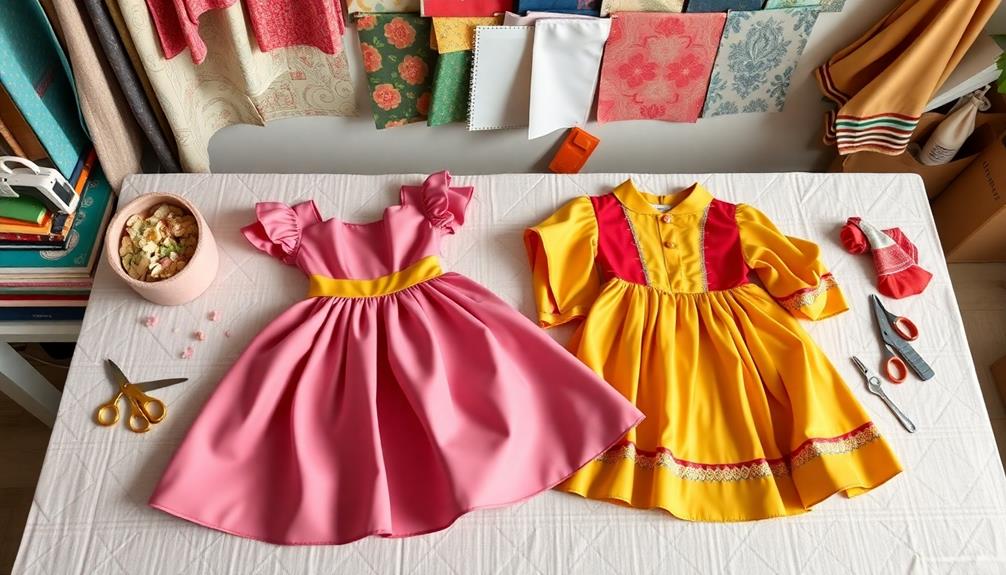
If you're looking to create a DIY costume at home, start by gathering easy materials like old clothes, fabric scraps, and recyclable items.
Draw inspiration from characters in popular Filipino literature, such as those in "Noli Me Tangere" or "El Filibusterismo," to bring your costume to life.
With a bit of creativity and resourcefulness, you can craft a unique outfit that pays homage to Filipino culture.
Easy DIY Materials
Often, you can find inspiration for DIY costumes right at home using simple materials. Repurposing recyclable items not only helps the environment but also allows you to create unique costumes inspired by Filipino literature.
Here are three easy DIY materials you can use:
- Cardboard: Cut and shape it into armor or accessories, perfect for characters like the brave Juan Tamad.
- Fabric Scraps: Old clothing can be transformed into flowing garments that represent characters such as Mariang Makiling. Mix and match colors for a vibrant look!
- Colored Paper: Use it to make whimsical accessories or masks, adding a pop of color to your costume.
Don't forget to incorporate natural elements like leaves or flowers to enhance your costume's authenticity.
You can find plenty of online tutorials that offer step-by-step guidance, making it easy for anyone to get involved. Plus, participating in community challenges can inspire creativity and foster a deeper appreciation for Filipino culture.
Character Inspiration Sources
Exploring character inspiration from Filipino literature opens up a world of creative possibilities for your DIY costume projects. One standout character to reflect upon is Maria Makiling, a beloved figure from Filipino folklore. To embody her enchanting persona, think about using flowing fabrics in green and gold to represent the lush forest she guards.
You can also incorporate natural elements like leaves or flowers to enhance your costume's connection to nature.
Another fascinating character is the Tiyanak, a creature from Filipino mythology. For this costume, you might use dark, tattered clothing and add red accents to evoke a haunting presence.
Reflect on using recyclable materials like old sheets or fabric scraps to create a spooky yet sustainable look.
Don't forget that online platforms are brimming with DIY tutorials that can guide you in crafting accurate representations of these characters. Engaging in community challenges, especially during events like National Reading Month, not only fosters camaraderie but also deepens your appreciation for Filipino literature.
Popular Events for Literary Costumes
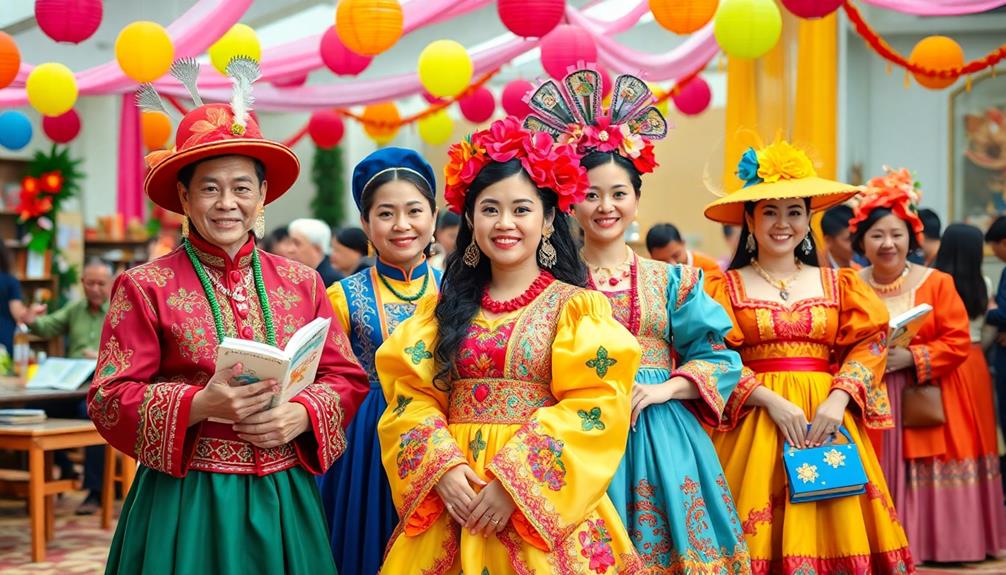
As National Reading Month unfolds in the Philippines, you'll find a vibrant array of events where literary costumes take center stage. Schools and libraries host costume contests, encouraging students to dress up as their favorite characters from both Filipino and English literature. This not only promotes creativity but also fosters a love for reading.
When you're planning your participation, consider these popular events:
- Costume Contests at Schools: Join your classmates in showcasing your interpretation of iconic characters from beloved novels like "Noli Me Tangere" or "El Filibusterismo." The competition can be fierce, so creativity is key!
- Community Gatherings: Attend local events centered on literature where everyone dresses as figures from Filipino folklore. You might see everything from mythical creatures to legendary heroes, all celebrating our rich literary heritage.
- Cosplay Conventions: With the rise of cosplay culture, these events provide an excellent opportunity to showcase elaborate Halloween costumes inspired by characters from Filipino children's literature and folklore.
Participating in these events not only elevates your love for literature but also connects you with others who share your passion.
Tips for Creating Authentic Looks

Creating authentic looks for your literary costumes can elevate your overall presentation and deepen your connection to the characters you admire. Start by incorporating traditional Filipino fabrics like piña or silk. This choice not only enhances authenticity but also showcases the rich textile heritage of the Philippines.
Additionally, consider using eco-friendly materials for your costumes to promote sustainability, just as you'd with eco-friendly and safe materials for toys.
Next, explore local folklore elements, particularly colors and symbols from works like "Noli Me Tangere" and "El Filibusterismo." These details can create a deeper cultural connection and tell a story through your costume.
Consider using DIY techniques with recyclable materials to craft unique, eco-friendly costumes that reflect your character's traits and settings.
Don't forget to pay attention to accessories—props or jewelry that symbolize your character's narrative significance can make a big difference. For instance, if you're portraying a character with strength, a championship belt could symbolize their triumphs and struggles.
Celebrating Filipino Heritage Through Costumes
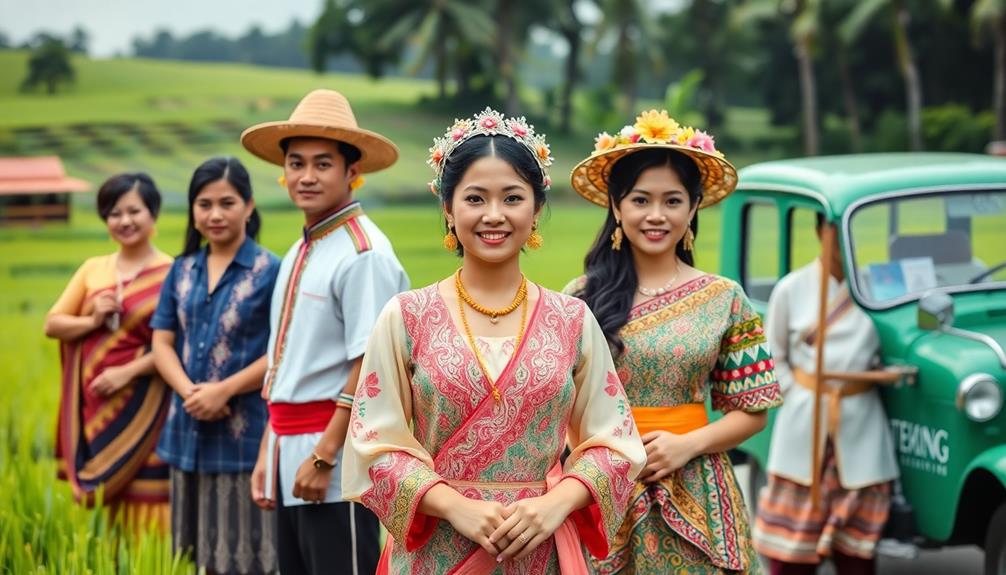
Costumes inspired by Filipino literature not only bring characters to life but also serve as a vibrant celebration of cultural heritage.
By donning these costumes, you embrace the stories of iconic figures like those from José Rizal's "Noli Me Tangere" and "El Filibusterismo," while also paying homage to traditional folklore.
Events like National Reading Month encourage schools and communities to participate in costume contests, fostering pride in your cultural identity.
Here are three ways to celebrate Filipino heritage through costumes:
- Historical Figures: Dress up as José Rizal, highlighting his contributions, or even Manny Pacquiao, showcasing his impact on sports and Filipino pride.
- Folklore Characters: Represent mythical beings like Mariang Makiling or the Tiyanak, which helps preserve these narratives for younger generations.
- Sustainable Costumes: Create outfits using recyclable materials to reflect modern sustainability practices while honoring traditional Filipino stories.
Frequently Asked Questions
What Are the Philippine Traditional Costume?
Philippine traditional costumes include the Barong Tagalog for men and the Barot Saya for women, showcasing vibrant colors and intricate designs. You'll also find the elegant Terno, which features beautiful butterfly sleeves.
What Is the Costume Worn by a Filipino Woman?
"Beauty's in the eye of the beholder." When you see a Filipino woman, she might wear the Barot Saya or Terno, showcasing vibrant fabrics and intricate designs that reflect her rich cultural heritage and elegance.
What Was the Costume of the Spanish Colonization in the Philippines?
During Spanish colonization, you'd see the Barong Tagalog for men and Barot saya for women. These garments blended indigenous styles with European aesthetics, featuring intricate designs and vibrant colors that reflected the era's cultural fusion.
Conclusion
In celebrating Filipino literature through costumes, you're not just wearing fabric; you're weaving a tapestry of culture and history. Each character you embody tells a story, connecting you to the rich heritage of the Philippines. Whether you choose iconic figures or traditional attire, remember that your costume is a bridge to the past, inviting others to explore the vibrant narratives that shape our identity. So go ahead, let your creativity flow and honor these literary treasures.
